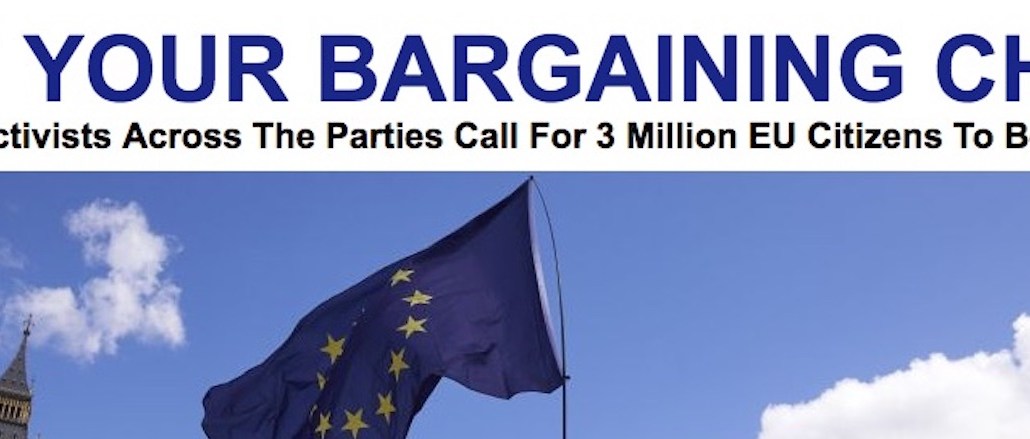
Like many publishers, The Huffington Post U.K. is seeing explosive growth in video. The publisher has built a seven-person team dedicated to video in six months, and its Facebook videos are averaging 70 million views each month, according to Facebook Insights shared by the publisher.
“So much of what we are doing now is with video,” said Huffington Post president and editor-in-chief Arianna Huffington. “We’re talking about video from every aspect — short-form Facebook Live and Snapchat, all the way to series that take a longer time to produce but really add value to people’s life. I’m a big believer in 360-degree video and virtual reality, and also in series that are true to our DNA of connecting with people.”
In April, The Huffington Post acquired Ryot, a virtual reality production house. Since then, they’ve been exploring how to use 360-degree videos for breaking-news events, said editor-in-chief Stephen Hull. They’ve produced a handful, such as this footage of the anti-Brexit protest in London from June 28, which has gotten 19,000 views.
Hull said the viewers are there for 360 video, but the execution is a challenge.
“We managed to put this video up quickly, but it was a very intense process,” Hull said. “How we do it to scale with a quality that will make people share it is what we’re still working out.”
Celebrating the U.K. edition’s fifth birthday this week, the publisher, which has 15 global editions, has steadily grown its U.K. readership of 10.7 million unique monthly users, according to May comScore figures. Under Hull, who joined shortly after the launch, the edit team has grown from seven to 40. “Probably the biggest challenge we and the industry face is developing journalists who can write great stories into video producers,” he said. Now, with a new head of video and multimedia in place, and the soundproofing laid in its new studio, the video strategy is looking more solid.
Currently, Huffington Post video falls into three categories: quick takes on the news, such as this 40-second video reacting to Nigel Farage resigning; minute-long explainers, like this one on why Boris Johnson isn’t running for the Conservative party leadership; and original reporting. Recent topics include what Ramadan means for young Muslims or interviews with victims of post-Brexit racism. It also just announced a 10-part original series called #PowerShift, where “Game of Thrones” star Sophie Turner discusses social media’s positive effect on culture.

Then there’s Facebook Live. Since January, the HuffPo has posted 17 live videos, which have collectively gained nearly 15,000 interactions, according to SocialBakers data. The HuffPo has tried putting reporters in front of the camera but has had more success interviewing people like rapper AKON and TV personality Jo Frost (AKA “Supernanny”) who was interviewed giving advice on disciplining children. Apart from figuring out what works on video, the HuffPo is working on how to get more out of its live content after the broadcast is over. In the Supernanny case, the live video was also turned into an article.
“Can we edit it into something that lives on elsewhere, building it into a bigger story rather than just that live moment?” Hull said. “We’re quite a lean team, so if something is good enough for Facebook, it’s good enough to live on our site, too.”
This approach was was also used when the HuffPo launched a 24-hour pop-up Snapchat Discover channel and repurposed content for the site afterward. The HuffPo is not a Discover partner, but in the past month, it has been posting video to Snapchat around issues that are core to its coverage. The political team used Snapchat to post on the March for Europe rally last weekend, which got 30,000 views, and Jo Cox’s memorial service (40,000 views), which was featured by Snapchat in the Live London Stories section.
Like all publishers, the HuffPo hopes it’s reaching new audiences on Snapchat but is still waiting for more detail from the platform to prove this. Until then, Hull said, “We owe it to readers to be publishing in all these different ways.”
Images courtesy of Huffington Post.
More in Media

From sidelines to spotlight: Esports events are putting creators center stage
Esports events’ embrace of content creators reflects advertisers’ changing priorities across both gaming and the wider culture. In the past, marketers viewed esports as one of the best ways to reach gamers. In 2025, brands are instead prioritizing creators in their outreach to audiences across demographics and interest areas, including gaming.

Condé Nast and Hearst strike Amazon AI licensing deals for Rufus
Condé Nast and Hearst have joined the New York Times in signing a licensing deal with Amazon for its AI-powered shopping assistant Rufus.

Media Briefing: AI payouts may be entering a new era
AI compensation is evolving — and new models, not just publisher demands, are driving the shift beyond flat-fee licensing.





